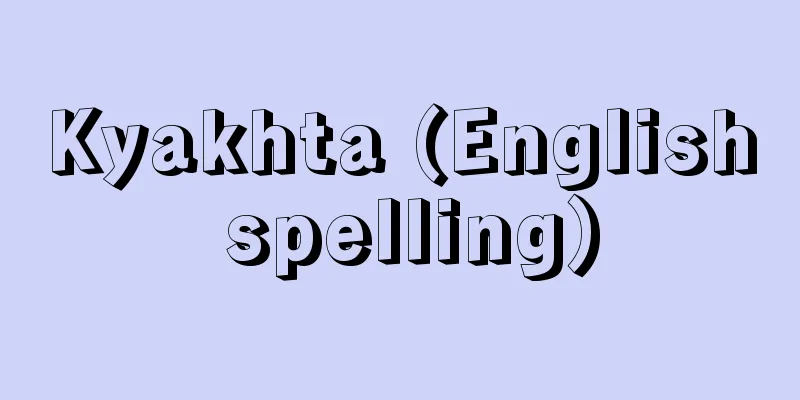Congo Crisis - Kongo Doran

|
The term refers to two conflicts that occurred in the Republic of the Congo (later the Republic of Zaire, now the Democratic Republic of the Congo), from July 1960 to January 1963 and from June 1964 to March 1965. Sometimes it refers only to the former. During the colonial period, the Congo was under paternalistic rule by Belgium, and political activity by the Congolese was not permitted, so the development of the nationalist movement was extremely delayed when the country gained independence on June 30, 1960. Furthermore, the country, which could be described as a mosaic society of the four major tribes of the Congo, Luba, Mongo, and Lunda, as well as many other tribes, lacked unity to a great extent, and great difficulties lay ahead for the country as an independent nation. In order to confront these difficulties head-on, the biggest issue at the time of independence was whether to adopt centralism or compromise and adopt decentralization, but in the end, the Congo gained independence as a country with a strong centralist character under the leadership of the Congolese National Movement (MNC). However, in contrast to Prime Minister Lumumba (Congolese National Movement), President Kasavubu (Abaco Party) was a proponent of decentralisation, and the central government was not united from the start. When a military rebellion broke out in the capital on July 6, 1960, and spread to the provinces, Tshombe, a local autocrat, took advantage of the situation and declared the separation and independence of Katanga Province on the 11th of the same month, and in September Kalonji also declared the separation and independence of South Kasai Province, and the civil war in the Congo escalated into full scale. Belgium also sent troops to Katanga on the pretext of protecting its compatriots, and the United Nations demanded their withdrawal, and the unrest escalated into an international conflict. In September, seeing the intensification of the conflict within the central government, General Mobutu seized power and organized a committee-based government. Lumumba, who had attempted to escape to Stanleyville (now Kisangani), was massacred in February 1961. During this time, Gizenga, a supporter of Lumumba, declared the establishment of a central government in Stanleyville, and the political situation became increasingly chaotic. However, in August 1961, a national unity government headed by the centrist Adula was formed, and the Stanleyville government voluntarily dissolved itself. Kasai South also retracted its secession plan in September 1962. Meanwhile, Katanga succumbed to a full-scale attack by UN forces that began at the end of 1962, and in January 1963 it retracted its secession plan and declared its return to the Republic of the Congo. During this time, the eastern countries supported the Lumumba faction, while the western countries maintained an ambiguous attitude. After the UN forces withdrew in June 1964, Lumumba rebels, including those led by Murele and Gbenye, intensified their armed struggle and seized control of half of the country. However, the central government, with military support from the United States and Belgium, managed to put down the rebels by March 1965, bringing an end to the unrest. [Hideo Oda] [References] | | |Source: Shogakukan Encyclopedia Nipponica About Encyclopedia Nipponica Information | Legend |
|
コンゴ共和国(のちザイール共和国、現在のコンゴ民主共和国)で、1960年7月から1963年1月、1964年6月から1965年3月と、二度にわたって起こった紛争をいう。前者だけに限定していう場合もある。コンゴは、植民地時代にベルギーの父権主義的支配の下に置かれ、コンゴ人の政治的活動が認められていなかったため、ナショナリズム運動の発展が極度に遅れたままの状態で1960年6月30日の独立を迎えることとなった。そのうえコンゴ、ルバ、モンゴ、ルンダの四大部族その他多数の部族のモザイク社会ともいうべき同国は、著しく統一性を欠いており、独立国としての前途には大きな困難が横たわっていた。この困難に正面から対決するために、中央集権主義をとるか、それとも妥協して地方分権主義をとるかは、独立時の最大の争点となったが、結局コンゴ国民運動(MNC)の指導下にコンゴは中央集権的色彩の強い国家として独立した。しかしルムンバ首相(コンゴ国民運動)とは対照的に、カサブブ大統領(アバコ党)は地方分権派であったため、中央政府の足並みは当初から乱れていた。 1960年7月6日首都で起こった軍隊の反乱が地方に拡大すると、これに乗じた地方分権派のチョンベは同月11日カタンガ州の分離独立を宣言し、9月にはカロンジも南カサイ州の分離独立を宣言して、コンゴの内乱は本格化した。またベルギーは同胞の保護を理由にカタンガに出兵し、国連はその撤兵を要求して、動乱は国際紛争に発展した。9月には中央政府内の対立が激化したのをみてモブツ軍司令官が実権を奪って委員制内閣を組織し、スタンリービル(現キサンガニ)へ脱出を図ったルムンバは1961年2月に虐殺され、この間ルムンバ派のギゼンガがスタンリービルで中央政府の樹立を宣言するなど、政情は混迷の度を強めたが、1961年8月に中道派のアドゥラを首班とする挙国一致内閣の発足によって、スタンリービル政権は自主的に解消し、南カサイも1962年9月に分離独立を撤回した。他方カタンガも、1962年末に始まる国連軍の総攻撃に屈し、1963年1月に分離の撤回、コンゴ共和国への復帰を宣言した。この間、東側諸国はルムンバ派を支持し、西側諸国はあいまいな態度に終始した。 その後1964年6月に国連軍が撤退すると、ムレレ、グベニエなどのルムンバ派反政府勢力が武装闘争を強め、国土の半分を制圧したが、中央政府はアメリカ、ベルギーの軍事支援を得て、1965年3月までにこれを鎮圧し、動乱は終息した。 [小田英郎] [参照項目] | | |出典 小学館 日本大百科全書(ニッポニカ)日本大百科全書(ニッポニカ)について 情報 | 凡例 |
>>: Concord (English spelling)
Recommend
Aschaffenburg, G.
…Theories of crime etiology can be divided into t...
Yasuna Takami - Anato
The name of a Saibara piece. The title comes from ...
Boron carbide (boron carbide)
Boron carbides are said to exist with compositions...
Forster, G.
...However, even after the Thirty Years' War,...
Lump sum - ichijikin
〘 noun 〙① Money paid only once. It is used in cont...
Changi Airport
…Another runway is planned for construction in th...
Yoshitsura Isshiki
Year of death: May 15, 12th year of Eikyo (June 14...
Oil Well Cement
...Because it has a faster setting and hardening ...
Coastal open area - Engankaihochiiki
... After that, the number of designated areas on...
Tuyūl; Tiyūl
A form of land ownership in Iran. In it, the state...
Onsenguchi [Hot spring] - Onsenguchi
...A hot spring located in the northwest of Gunma...
Rallaria (Rallaria) - Rallaria (English spelling) mesite
A general term for birds in the Mesoenatidae famil...
Witch hazel - Witch hazel
A deciduous tree of the Hamamelidaceae (APG class...
Jyu (English spelling) medicine man; witch doctor
A practitioner who treats illnesses primarily thro...
Phytosterol
…Cholesterol is a precursor of steroids that have...









